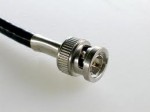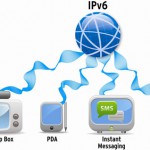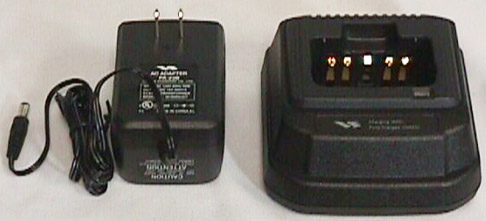Posts Tagged ‘VHF’
 Say Goodbye to the BNC
Say Goodbye to the BNC
 There was a discussion on Google+ the other day about how a particular handheld transceiver has an SMA connector, instead of the venerable BNC connector. I noted that many of the newer HTs are going with SMA, presumably because of the smaller size. In fact, I started thinking about it…I didn’t think you can buy an HT anymore with a BNC.
There was a discussion on Google+ the other day about how a particular handheld transceiver has an SMA connector, instead of the venerable BNC connector. I noted that many of the newer HTs are going with SMA, presumably because of the smaller size. In fact, I started thinking about it…I didn’t think you can buy an HT anymore with a BNC.
I took at look at some of the ham radio dealer websites to see if I was right. These radios all have SMA connectors: Alinco DJ-175T, DJ-C7T, DJ-G7T, DJ-G29T, DJ-V17T, DJ-V57T; ICOM IC-80AD, IC-92AD, IC-T70A, ID-31A: Kenwood TH-D72A, TH-F6A, TH-K20A; Yaesu FT-60R, FT-250R, FT-270R, VX-3R, VX-6R, VX-7R, VX-8R. The Wouxun radios are SMA but with a male connector on the radio (opposite gender compared to the other manufacturers…a topic for another day.)
But I did find three ICOM models that have BNC connectors: IC-V80, IC-V82, IC-U82.
The trend line is clear…the BNC is on the way out for amateur radio handheld transceivers.
Do I care?
Well, yes, I do.
I have a collection of extended length antennas that are much more efficient than the standard dummy load rubber duck. These are great for portable operation, mountaintopping, etc. I have not found very many of these antennas available with SMA connectors. Even if they were available, I am not sure I’d want to attach them to an SMA connector on an HT. For example, a 1/2-wave 2-Meter antenna is about 38 inches long — I am skeptical that an SMA provides enough mechanical strength to support it. Even with a BNC, I have always been very careful to not put too much strain on the connector.
We will have to see where this leads but it seems that the BNC will fade away for amateur use. Most mobile and base rigs use PL-259 and/or N connectors so HTs have been the main application for a BNC.
Goodbye, BNC, I am going to miss you.
73, Bob K0NR
Update on Feb 24: I’ve had several people suggest to me “just use a BNC-to-SMA adapter.” This certainly takes care of making a good electrical connection but mechanically they are generally weak.
 LHS Episode #073: Advanced Networking Topics
LHS Episode #073: Advanced Networking Topics
 Today the guys delve deep into their geek pockets and come up with a couple of fairly advanced networking topics. One is ham radio related, the other is everything related. Don’t be scared off, however, as the discussion is a 10,000-foot overview of these technologies and how they will be important in YOUR future. Russ tackles IPv6 in a generic way, discussing using it with Linux, and gets on his soapbox about how everyone should already be using it.
Today the guys delve deep into their geek pockets and come up with a couple of fairly advanced networking topics. One is ham radio related, the other is everything related. Don’t be scared off, however, as the discussion is a 10,000-foot overview of these technologies and how they will be important in YOUR future. Russ tackles IPv6 in a generic way, discussing using it with Linux, and gets on his soapbox about how everyone should already be using it.
Richard discusses a wireless technology called HSMM or High-Speed Multimedia. This is a networking technique that blurs the line between FCC Part 15 and FCC Part 97, but gives ham radio operators some new and exciting things to try with their off the shelf wireless gear. HSMM has some nice features and will definitely earn you your Boy Scout Geek Cred Badge if you decide to dive in.
Thanks as always to our listeners, present and future. Comments and questions, make sure to send them our way. Donations are also appreciated. If you want to promote yourself, your ideas or your projects, leave us an intro to the show at 1-909-LHS-SHOW. Stay geeky!
 Four metres
Four metres
There are a number of things I’d like to do radio-wise this year. One of them is to get equipped for SSB on four metres.
I have spent quite a lot over the last two or three years on 2m SSB and have very few contacts to show for it. My QTH in the Cockermouth Black Hole seems to be prevented by the Lake District mountains from receiving good signals from other English stations by normal propagation. I don’t even experience much in the way of tropo openings here. The only real 2m DX I have worked are a handful of Sporadic-E (Es) contacts into Spain and Portugal. One thing I have learned is that 144MHz Es, which is a pretty rare thing in any case, is considerably rarer the further north you get. I was ill and recovering from my brain operation during the peak of the Es season last year but as far as I can tell from DX Sherlock no Sporadic-E openings on 2m reached this far north during 2011 so I didn’t actually miss anything.
Six metres is another matter. I have made lots of contacts on the Magic Band even though my 6m antenna is just the addition of two quarter-wave wire elements to my multi-band attic dipole. Four metres won’t be open as often as Six but it should sustain Sporadic-E propagation a lot more often than Two does. And now that many European countries have granted their amateurs 4m allocations I think there could be a good chance of working some summertime DX.
The plan depends on my finding space in my attic antenna farm for a 4m antenna. One of the first home improvements Olga and I will make this year is to replace the central heating boiler and we’re advised that the most efficient types available now heat the water on demand and don’t need a header tank or pipes in the loft. I’m a bit apprehensive about letting workmen loose in the attic when I’m not sure whether I’m capable of moving around safely up there to check my antennas are OK and repair any damage. But getting rid of the tank and copper pipes will make a bit more space for the antennas and hopefully allow me to mount a 4m Moxon on the rotator where the 2m one currently is.
I will also need a radio for 4m SSB. I guess I’m looking at getting a Spectrum Communications transverter for this. Probably a ready built one as I’m not really sure I can manage to assemble that complex a kit any more. I wonder if anyone has successfully modified an Elecraft XV50 for 70MHz?
 Buy the Drop-In Charger
Buy the Drop-In Charger
I’d like to pass along a tip that has taken me about 25 years of ham radio experience to figure out. I’ve owned many different models of handheld FM transceivers through the years and have always just used the standard “wall wart” charger to charge the batteries. 
Recently, I decided to “splurge” and get desktop chargers for the pair of FT-60′s that inhabit our two-ham household. I never realized how handy the drop-in style charger could be until I had one…the HT is always sitting there ready to go. Most of these drop-in chargers are rapid chargers that sense the battery condition — charging them quickly but also dropping back to a trickle charge once they are full.
Since then, I’ve made it a point to always pick up a desktop charger with a new HT. Yes, it does cost $60 to 75 extra but it is well worth the convenience.
73, Bob K0NR
 More Summits On The Air (SOTA) Info
More Summits On The Air (SOTA) Info
 I recently wrote about the Summits On The Air (SOTA) program gaining traction here in Colorado. Catching up on some of my podcast listening, I came across Jerry KD0BIK’s Practical Amateur Radio Podcast (PARP) on the topic of SOTA. It turns out that Jerry has gotten hooked on the SOTA program and has been out activating some of the Colorado peaks in December.
I recently wrote about the Summits On The Air (SOTA) program gaining traction here in Colorado. Catching up on some of my podcast listening, I came across Jerry KD0BIK’s Practical Amateur Radio Podcast (PARP) on the topic of SOTA. It turns out that Jerry has gotten hooked on the SOTA program and has been out activating some of the Colorado peaks in December.
Operating a ham radio on top of a mountain during winter may seem like the act of a person with only one oar in the water (or shall we say one half of a dipole in the air?). But actually, we’ve had quite a few days of favorable weather that have been begging us to get outdoors in December. Still, I am on guard for an activation by Jerry in the middle of a blizzard, as he seems a bit smitten by this SOTA thing.
Episode 49 of PARP introduces the SOTA concept near the end of the episode, which is followed by a deeper SOTA discussion in Episode 50. These two episodes run about 25 minutes each, so take some time out to give them a listen.
73, Bob K0NR
 DV Wars in 2012?
DV Wars in 2012?
In 2012 Yaesu will introduce a range of digital voice radios to the amateur market. They have published a Digital Communications Guide for Amateur Radio Operators that describes their new system and answers some questions about it. Yaesu’s offering seems to be compatible with Motorola’s professional digital mobile radio system, which offers hams the possibility of a second source of compatible equipment on the surplus market – not that used professional Motorola radios have ever been cheap. But the Yaesu system will not be compatible with D-Star. No surprise there, then.
I have always believed it was a foolish move for ham radio organizations like our RSGB to allow themselves to be bamboozled by Icom into permitting the creation of a digital network that gave one supplier a monopoly. Repeater groups and their members who have made substantial investments in D-Star technology are not going to want to switch to a different digital mode that makes existing hardware obsolete. On the other hand, D-Star itself is becoming an outmoded technology in digital terms. Hams who have been sitting on the fence looking for an up to date alternative that doesn’t involve buying Icom are not going to plump for one system or the other while the future looks like being fragmented into rival factions. It will be like the video war between VHS and Betamax.
I think Yaesu’s announcement will kill the already lame duck of D-Star and ensure that analogue FM remains the dominant mode on the amateur VHF bands and up for years to come.
 Mixed Signals from Yaesu
Mixed Signals from Yaesu
This just in from the Things That Make You Go Hmmm Department: the amateur radio portion of Yaesu splits from Mother Motorola while the land mobile portion stays. This is right on top of an announcement that Yaesu will pursue a digital amateur radio offering based on land mobile technology (i.e., definitely not D-STAR).
The K0KDS blog has a post about the split, so go there for the full story. The ARRL has this news item about the organizational change. Here’s the paper that Yaesu published about their move into digital technology for amateur radio.
73, Bob K0NR













